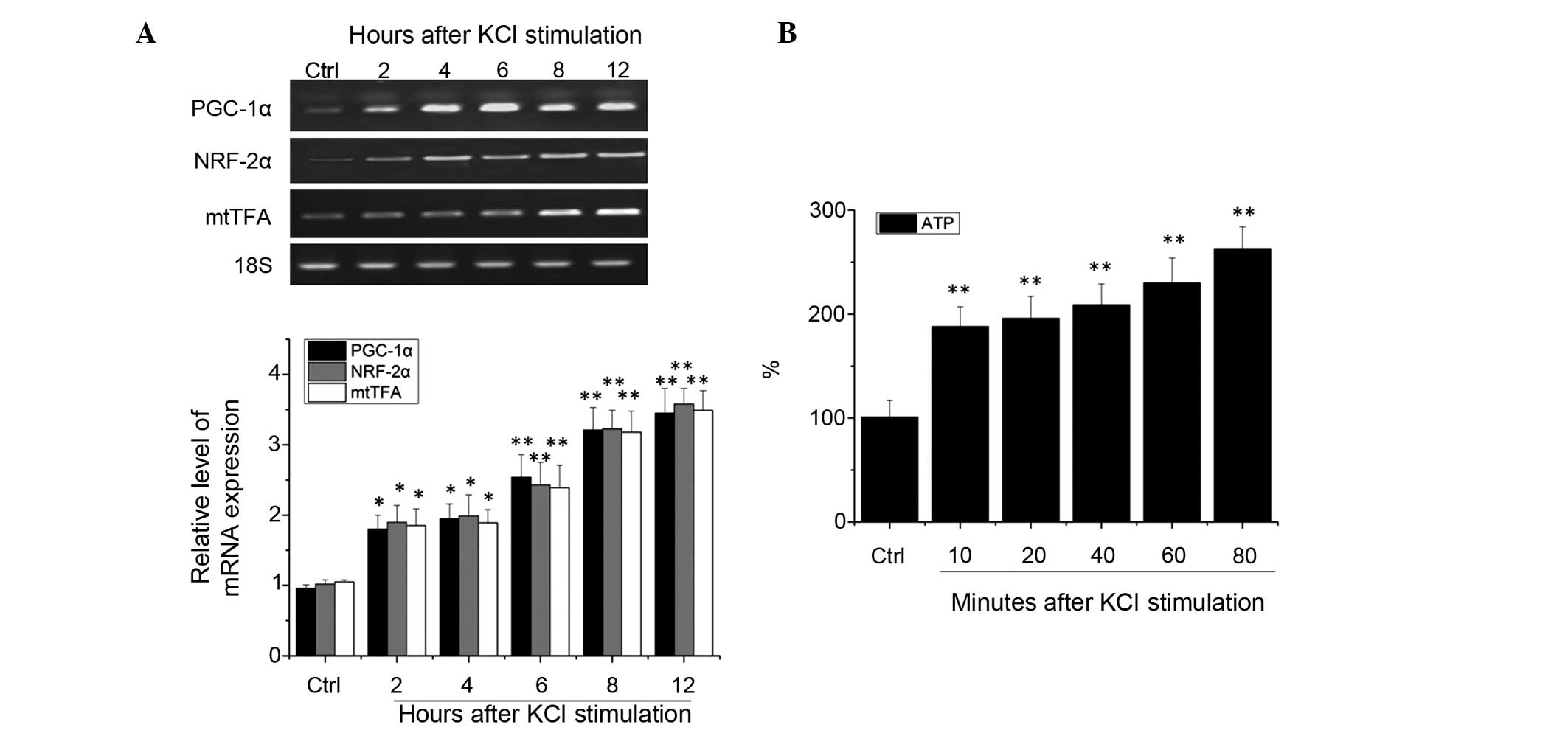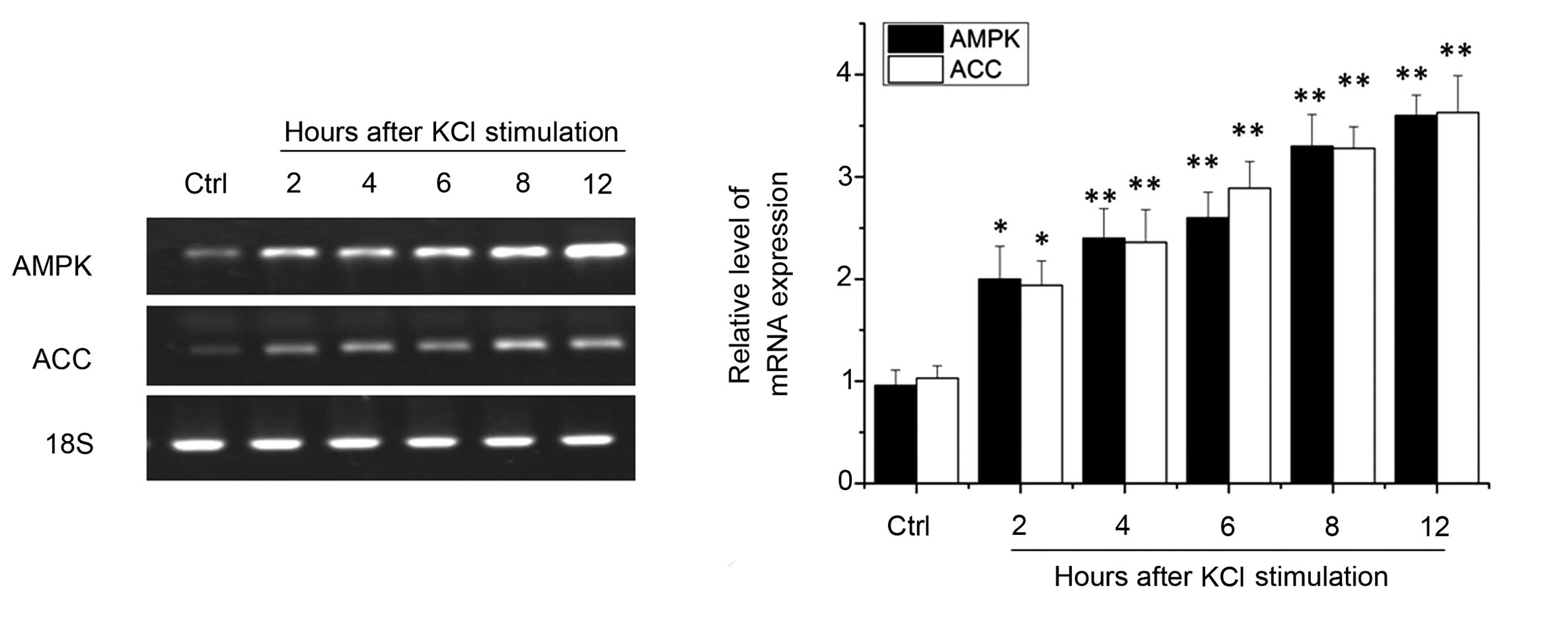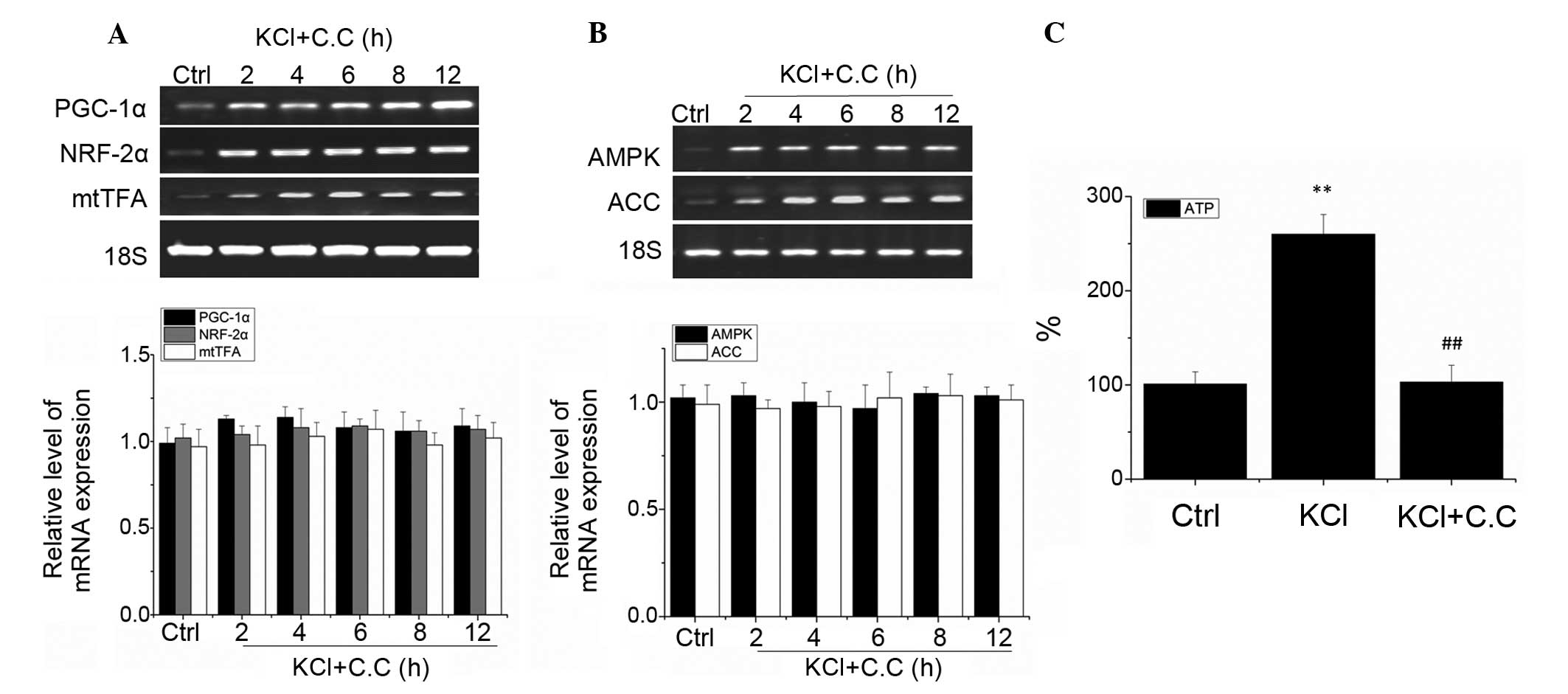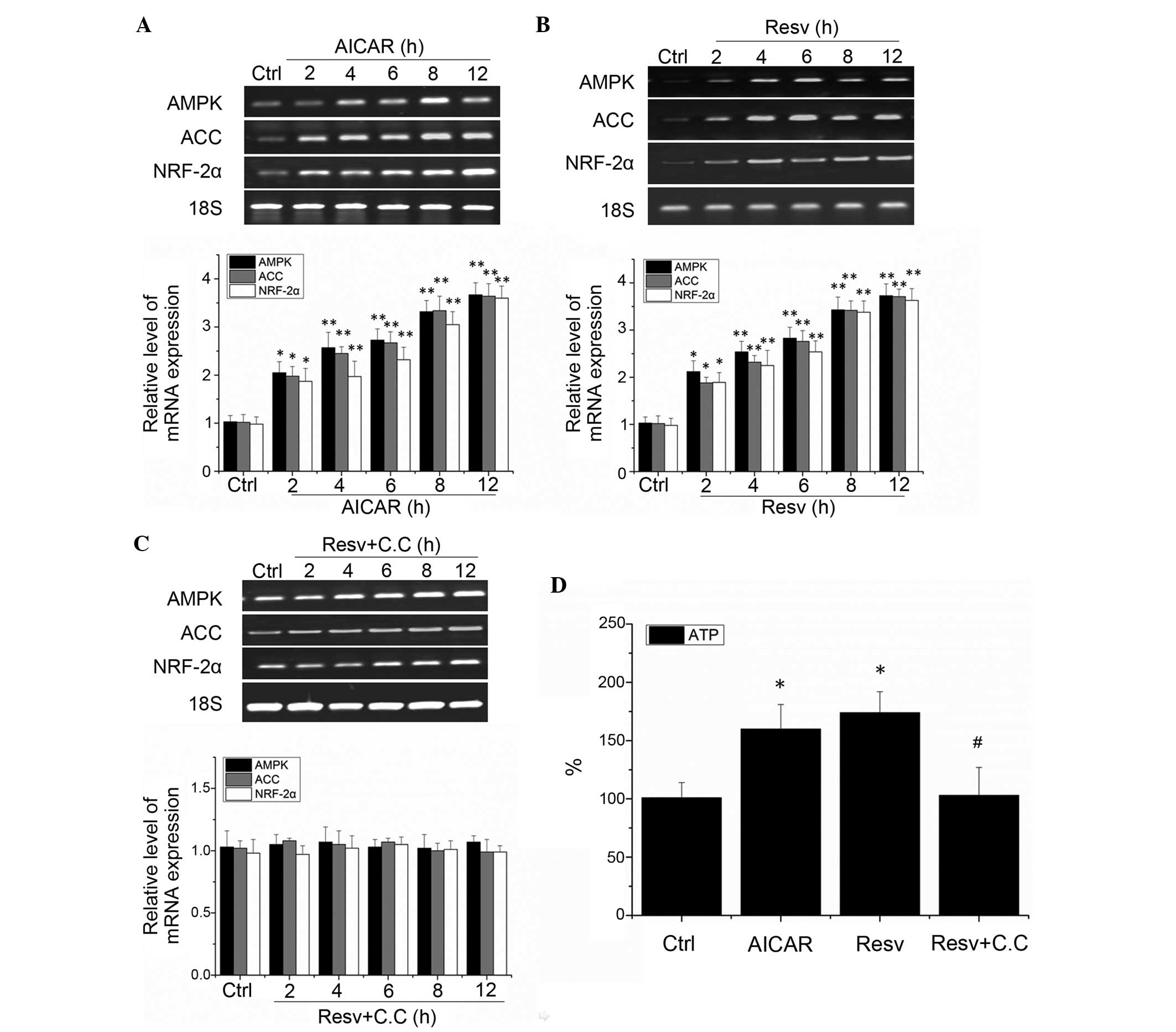|
1
|
Kann O and Kovács R: Mitochondria and
neuronal activity. Am J Physiol Cell Physiol. 292:C641–C657. 2007.
View Article : Google Scholar
|
|
2
|
Leruez S, Amati-Bonneau P, Verny C,
Reynier P, Procaccio V, Bonneau D and Milea D: Mitochondrial
dysfunction affecting visual pathways. Rev Neurol (Paris).
170:344–354. 2014. View Article : Google Scholar
|
|
3
|
Nisoli E, Clementi E, Moncada S and
Carruba MO: Mitochondrial biogenesis as a cellular signaling
framework. Biochem Pharmacol. 67:1–15. 2004. View Article : Google Scholar
|
|
4
|
Kuo JJ, Chang HH, Tsai TH and Lee TY:
Curcumin ameliorates mitochondrial dysfunction associated with
inhibition of gluconeogenesis in free fatty acid-mediated hepatic
lipoapoptosis. Int J Mol Med. 30:643–649. 2012.PubMed/NCBI
|
|
5
|
Shi Y, Dierckx A, Wanrooij PH, Wanrooij S,
Larsson NG, Wilhelmsson LM, Falkenberg M and Gustafsson CM:
Mammalian transcription factor A is a core component of the
mitochondrial transcription machinery. Proc Natl Acad Sci USA.
109:16510–16515. 2012. View Article : Google Scholar : PubMed/NCBI
|
|
6
|
Ongwijitwat S, Liang HL, Graboyes EM and
Wong-Riley MT: Nuclear respiratory factor 2 senses changing
cellular energy demands and its silencing down-regulates cytochrome
oxidase and other target gene mRNAs. Gene. 374:39–49. 2006.
View Article : Google Scholar : PubMed/NCBI
|
|
7
|
Li WY, Yao CX, Zhang SF, Wang SL, Wang TQ,
Xiong CJ, Li YB and Zang MX: Improvement of myocardial lipid
accumulation and prevention of PGC-1alpha induction by fenofibrate.
Mol Med Rep. 5:1396–1400. 2012.PubMed/NCBI
|
|
8
|
Hossain MB, Ji P, Anish R, Jacobson RH and
Takada S: Poly(ADP-ribose) polymerase 1 interacts with nuclear
respiratory factor 1 (NRF-1) and plays a role in NRF-1
transcriptional regulation. J Biol Chem. 284:8621–8632. 2009.
View Article : Google Scholar : PubMed/NCBI
|
|
9
|
Manwani B and McCullough LD: Function of
the master energy regulator adenosine monophosphate-activated
protein kinase in stroke. J Neurosci Res. 91:1018–1029. 2013.
View Article : Google Scholar : PubMed/NCBI
|
|
10
|
Rousset CI, Leiper FC, Kichev A, Gressens
P, Carling D, Hagberg H and Thornton C: A dual role for
AMP-activated protein kinase (AMPK) during neonatal
hypoxic-ischaemic brain injury in mice. J Neurochem. 133:242–252.
2015. View Article : Google Scholar : PubMed/NCBI
|
|
11
|
Scarpulla RC: Metabolic control of
mitochondrial biogenesis through the PGC-1 family regulatory
network. Biochim Biophys Acta. 1813:1269–1278. 2011. View Article : Google Scholar :
|
|
12
|
Yang SJ, Liang HL and Wong-Riley MT:
Activity-dependent transcriptional regulation of nuclear
respiratory factor-1 in cultured rat visual cortical neurons.
Neuroscience. 141:1181–1192. 2006. View Article : Google Scholar : PubMed/NCBI
|
|
13
|
Zhao Q, Wang S, Li Y, Wang P, Li S, Guo Y
and Yao R: The role of the mitochondrial calcium uniporter in
cerebral ischemia/reperfusion injury in rats involves regulation of
mitochondrial energy metabolism. Mol Med Rep. 7:1073–1080.
2013.PubMed/NCBI
|
|
14
|
Rodriguez-Rodriguez P, Almeida A and
Bolaños JP: Brain energy metabolism in glutamate-receptor
activation and excitotoxicity: role for APC/C-Cdh1 in the balance
glycolysis/pentose phosphate pathway. Neurochem Int. 62:750–756.
2013. View Article : Google Scholar : PubMed/NCBI
|
|
15
|
Breuer ME, Koopman WJ, Koene S, Nooteboom
M, Rodenburg RJ, Willems PH and Smeitink JA: The role of
mitochondrial OXPHOS dysfunction in the development of neurologic
diseases. Neurobiol Dis. 51:27–34. 2013. View Article : Google Scholar
|
|
16
|
Patterson CA, Duijnhouwer J, Wissig SC,
Krekelberg B and Kohn A: Similar adaptation effects in primary
visual cortex and area MT of the macaque monkey under matched
stimulus conditions. J Neurophysiol. 111:1203–1213. 2014.
View Article : Google Scholar :
|
|
17
|
Yu Wai Man CY, Chinnery PF and Griffiths
PG: Optic neuropathies - importance of spatial distribution of
mitochondria as well as function. Med Hypotheses. 65:1038–1042.
2005. View Article : Google Scholar
|
|
18
|
Sur M, Nagakura I, Chen N and Sugihara H:
Mechanisms of plasticity in the developing and adult visual cortex.
Prog Brain Res. 207:243–254. 2013. View Article : Google Scholar : PubMed/NCBI
|
|
19
|
Chevrollier A, Guillet V, Loiseau D,
Gueguen N, de Crescenzo MA, Verny C, Ferre M, Dollfus H, Odent S,
Milea D, et al: Hereditary optic neuropathies share a common
mitochondrial coupling defect. Ann Neurol. 63:794–798. 2008.
View Article : Google Scholar : PubMed/NCBI
|
|
20
|
Nie F and Wong-Riley M: Nuclear
respiratory factor-2 subunit protein: Correlation with cytochrome
oxidase and regulation by functional activity in the monkey primary
visual cortex. J Comp Neurol. 404:310–320. 1999. View Article : Google Scholar : PubMed/NCBI
|
|
21
|
Tao M, You CP, Zhao RR, Liu SJ, Zhang ZH,
Zhang C and Liu Y: Animal mitochondria: Evolution, function, and
disease. Curr Mol Med. 14:115–124. 2014. View Article : Google Scholar
|
|
22
|
Wong-Riley MT: Bigenomic regulation of
cytochrome c oxidase in neurons and the tight coupling between
neuronal activity and energy metabolism. Adv Exp Med Biol.
748:283–304. 2012. View Article : Google Scholar : PubMed/NCBI
|
|
23
|
Escrivá H, Rodríguez-Peña A and Vallejo
CG: Expression of mitochondrial genes and of the transcription
factors involved in the biogenesis of mitochondria Tfam, NRF-1 and
NRF-2, in rat liver, testis and brain. Biochimie. 81:965–971. 1999.
View Article : Google Scholar : PubMed/NCBI
|
|
24
|
D'Souza D, Lai RY, Suen M and Hood DA:
mRNA stability as a function of striated muscle oxidative capacity.
Am J Physiol Regul Integr Comp Physiol. 303:R408–R417. 2012.
View Article : Google Scholar : PubMed/NCBI
|
|
25
|
Girodet PO, Ozier A, Bara I, Tunon de Lara
JM, Marthan R and Berger P: Airway remodeling in asthma: New
mechanisms and potential for pharmacological intervention.
Pharmacol Ther. 130:325–337. 2011. View Article : Google Scholar : PubMed/NCBI
|
|
26
|
Mayall TP, Bjarnason I, Khoo UY, Peters TJ
and Macpherson AJ: Mitochondrial gene expression in small
intestinal epithelial cells. Biochem J. 308:665–671. 1995.
View Article : Google Scholar : PubMed/NCBI
|
|
27
|
Venditti P, Bari A, Di Stefano L, Cardone
A, Della Ragione F, D'Esposito M and Di Meo S: Involvement of
PGC-1, NRF-1, and NRF-2 in metabolic response by rat liver to
hormonal and environmental signals. Mol Cell Endocrinol. 305:22–29.
2009. View Article : Google Scholar : PubMed/NCBI
|
|
28
|
Williams T, Courchet J, Viollet B, Brenman
JE and Polleux F: AMP-activated protein kinase (AMPK) activity is
not required for neuronal development but regulates axogenesis
during metabolic stress. Proc Natl Acad Sci USA. 108:5849–5854.
2011. View Article : Google Scholar : PubMed/NCBI
|
|
29
|
Wang P, Zhang RY, Song J, Guan YF, Xu TY,
Du H, Viollet B and Miao CY: Loss of AMP-activated protein
kinase-α2 impairs the insulin-sensitizing effect of calorie
restriction in skeletal muscle. Diabetes. 61:1051–1061. 2012.
View Article : Google Scholar : PubMed/NCBI
|
|
30
|
Klip A, Schertzer JD, Bilan PJ, Thong F
and Antonescu C: Regulation of glucose transporter 4 traffic by
energy deprivation from mitochondrial compromise. Acta Physiol
(Oxf). 196:27–35. 2009. View Article : Google Scholar
|
|
31
|
Garcia-Roves PM, Osler ME, Holmström MH
and Zierath JR: Gain-of-function R225Q mutation in AMP-activated
protein kinase gamma3 subunit increases mitochondrial biogenesis in
glycolytic skeletal muscle. J Biol Chem. 283:35724–35734. 2008.
View Article : Google Scholar : PubMed/NCBI
|
|
32
|
Yan W, Zhang H, Liu P, Wang H, Liu J, Gao
C, Liu Y, Lian K, Yang L, Sun L, et al: Impaired mitochondrial
biogenesis due to dysfunctional adiponectin-AMPK-PGC-1α signaling
contributing to increased vulnerability in diabetic heart. Basic
Res Cardiol. 108:3292013. View Article : Google Scholar
|
|
33
|
Choi YJ, Suh HR, Yoon Y, Lee KJ, Kim DG,
Kim S and Lee BH: Protective effect of resveratrol derivatives on
high-fat diet induced fatty liver by activating AMP-activated
protein kinase. Arch Pharm Res. 37:1169–1176. 2014. View Article : Google Scholar : PubMed/NCBI
|
|
34
|
Shang J, Chen LL, Xiao FX, Sun H, Ding HC
and Xiao H: Resveratrol improves non-alcoholic fatty liver disease
by activating AMP-activated protein kinase. Acta Pharmacol Sin.
29:698–706. 2008. View Article : Google Scholar : PubMed/NCBI
|
|
35
|
Vingtdeux V, Giliberto L, Zhao H,
Chandakkar P, Wu Q, Simon JE, Janle EM, Lobo J, Ferruzzi MG, Davies
P and Marambaud P: AMP-activated protein kinase signaling
activation by resveratrol modulates amyloid-beta peptide
metabolism. J Biol Chem. 285:9100–9113. 2010. View Article : Google Scholar : PubMed/NCBI
|













